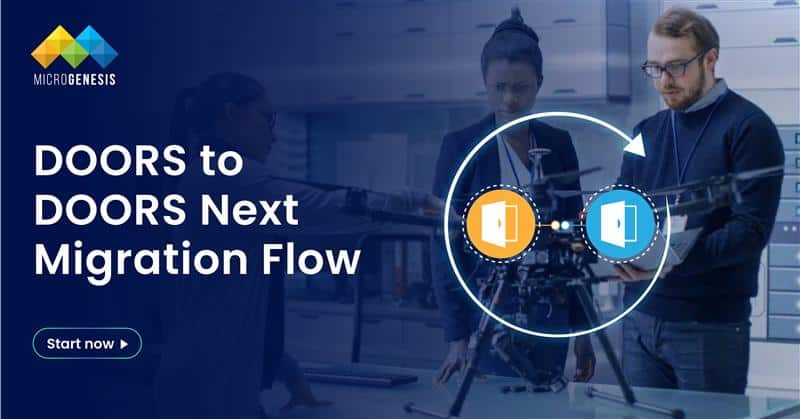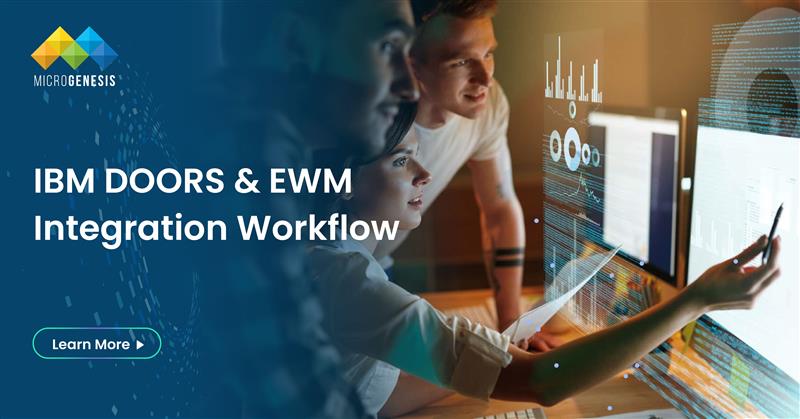In today’s fast-paced, complex development environments, managing requirements effectively is essential for the success of any project. Whether you are working on aerospace, automotive, medical devices, or any other regulated industry, having a comprehensive, efficient, and traceable requirements management system is crucial. IBM DOORS Next is a powerful tool for streamlining the management of requirements, offering end-to-end traceability and collaboration to ensure that products meet all stakeholder needs.
In this blog, we will explore what DOORS Next is, its capabilities, and how it enhances requirements management. We will also examine the key features, benefits, and best practices for using DOORS Next to maximize your project’s success.
What is IBM DOORS Next?
IBM DOORS Next is a modern, cloud-based requirements management tool that provides a collaborative environment for managing requirements throughout the product lifecycle. It is designed for teams that require robust, scalable, and highly traceable solutions for managing complex requirements, ensuring compliance, and enhancing collaboration across distributed teams.
DOORS Next is part of the IBM Engineering Lifecycle Management (ELM) suite, providing powerful features for creating, organizing, and tracing requirements from conception through design, development, and testing. It allows teams to manage requirements, track changes, and validate designs, making it a crucial tool for industries with strict compliance and quality assurance standards.
Key Features of DOORS Next for Requirements Management
1. Traceability and Version Control
DOORS Next provides powerful traceability capabilities, enabling teams to track and trace requirements across the entire development lifecycle. It ensures that every requirement is linked to related design elements, test cases, and verification processes, creating a digital thread that connects requirements to development activities.
The version control features allow teams to manage requirements as they evolve, keeping a history of changes and ensuring that each team member is working with the most up-to-date information. This ensures that teams can maintain alignment throughout the project and minimize the risk of errors caused by outdated or inconsistent requirements.
2. Collaboration and Workflow Management
DOORS Next supports real-time collaboration between project stakeholders. Whether you’re working with cross-functional teams or external partners, you can manage discussions, approvals, and feedback directly within the platform. Comments and discussions can be linked to individual requirements, ensuring that all communication stays contextual and traceable.
The tool also offers configurable workflows, allowing teams to automate approval processes, status tracking, and document reviews. This ensures that the right stakeholders are involved at each stage and that the process remains transparent and efficient.
3. Flexible Reporting and Dashboards
DOORS Next offers built-in reporting and dashboard features that provide insights into project progress, requirements status, and compliance. With customizable reports, teams can track requirements coverage, traceability, and changes. These reports can be generated in various formats, such as PDF, Excel, or HTML, to suit different stakeholders’ needs.
Dashboards allow project managers and teams to visualize key metrics in real-time, including requirements status, open actions, and risk analysis. This visibility into project health helps make more informed decisions and ensures alignment with project goals.
4. Integration with Other Tools
DOORS Next integrates seamlessly with other tools within the IBM Engineering Lifecycle Management suite, such as IBM Engineering Test Management (ETM) and IBM Engineering Workflow Management (EWM), as well as third-party tools like Jira. This integration, coupled with expert IBM ELM implementation services, ensures that requirements management is tightly coupled with other development activities, enabling continuous collaboration and traceability across the entire product lifecycle.
5. Advanced Security and Access Control
For teams handling sensitive or regulated projects, DOORS Next offers advanced security and access control mechanisms. Teams can define user roles and permissions at a granular level, ensuring that only authorized personnel can access or modify specific requirements. This helps meet compliance standards and ensures the integrity of the requirements management process.
Dig Deeper: Seven Reasons Why Engineering Lifecycle Management (ELM) is a Game Changer
Benefits of Using DOORS Next for Requirements Management
1. Improved Compliance and Quality Assurance
In highly regulated industries such as aerospace, automotive, and medical devices, compliance with standards such as ISO 9001, DO-178C, and FDA 21 CFR Part 820 is critical. DOORS Next ensures that all requirements are tracked and traceable, helping teams maintain alignment with these standards and providing an audit trail that proves compliance during inspections and audits.
2. Enhanced Collaboration and Communication
By centralizing all requirement-related discussions, comments, and approvals, DOORS Next fosters better collaboration among team members, stakeholders, and external partners. This centralized communication reduces the risk of miscommunication and ensures that all stakeholders are aligned, leading to faster decision-making and reduced errors.
3. Reduced Risk of Errors and Rework
The traceability features in DOORS Next reduce the likelihood of errors and rework by ensuring that all requirements are clearly defined, linked, and tracked throughout the development process. This digital thread allows teams to ensure that all design, development, and testing activities meet the original requirements, reducing the chances of missed or incomplete requirements.
4. Scalability for Large Projects
DOORS Next is highly scalable, making it suitable for managing both small and large, complex projects. Whether you’re working on a single product or managing multiple projects across different domains, DOORS Next can handle the increasing demands of large-scale requirements management. It supports large teams, distributed work environments, and complex project structures, ensuring that all requirements are organized and accessible.
5. Real-Time Insights into Project Health
With its reporting and dashboard features, DOORS Next gives project managers real-time insights into the health of the project. Managers can track requirements coverage, identify gaps, and monitor the status of requirements as they progress through the lifecycle. This allows for proactive decision-making and better risk management throughout the project.
Best Practices for Using DOORS Next in Requirements Management
1. Define Clear and Measurable Requirements
Start by defining clear, concise, and measurable requirements. Well-written requirements form the foundation of your project and ensure that the product meets the needs of stakeholders. Use DOORS Next to create clear traceability between requirements, designs, and test cases.
2. Utilize Traceability Links
Traceability is one of the key strengths of DOORS Next. Use the traceability links to connect requirements to design, testing, and verification activities. This will ensure that every requirement is covered and that you can easily track progress and identify potential issues early on.
3. Customize Workflows for Your Team’s Needs
Take advantage of DOORS Next’s customizable workflows to tailor the requirements management process to your team’s needs. Define review, approval, and status tracking processes that align with your internal processes and ensure that the right people are involved at the right time.
4. Regularly Review and Update Requirements
Requirements can change throughout the development process, especially in agile environments. Regularly review and update requirements to reflect new insights, stakeholder feedback, and changing project conditions. DOORS Next’s version control and history tracking make it easy to manage evolving requirements while keeping a clear record of changes.
5. Leverage Reports for Ongoing Monitoring
Use DOORS Next’s reporting and dashboard tools to monitor the progress of requirements management throughout the project. Generate regular reports to track compliance, coverage, and status, and use dashboards to get a high-level view of the project’s health.
Conclusion
IBM DOORS Next is a powerful requirements management tool that provides robust traceability, collaboration, and reporting capabilities to streamline the development process. Whether you’re working in a highly regulated industry or need a scalable solution for managing complex projects, DOORS Next helps teams ensure that requirements are met, compliant, and properly traced throughout the lifecycle.
At MicroGenesis, a trusted IT solution company and experienced IBM ELM Consultant, we help organizations leverage DOORS Next’s features and best practices to reduce errors, improve collaboration, and enhance compliance. Our expertise ensures faster project delivery and higher-quality products tailored to your business needs.
Start using DOORS Next today to improve your requirements management process and take your project’s success to the next level.




